11 Benefits of Sukhasana And How to Practice the Pose Perfectly
Experience the age-old wisdom of Sukhasana, a posture that not only aligns body and mind but also leads you to a state of true inner joy, peace, and meditation.
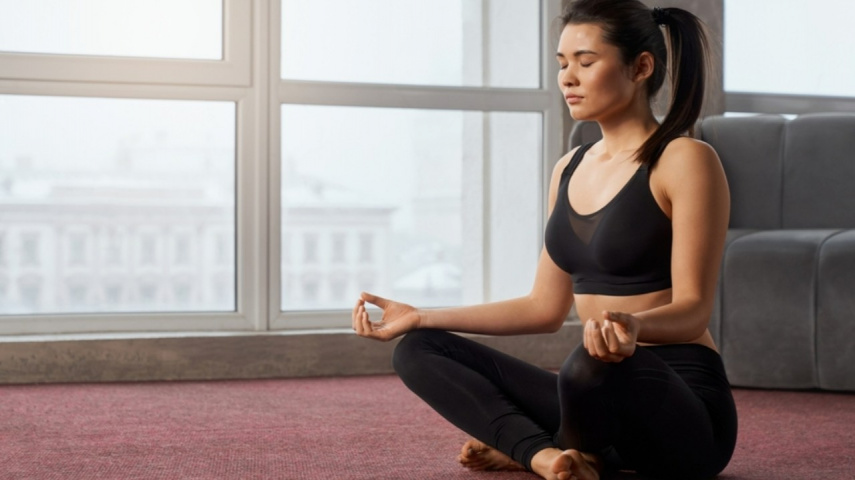
The serenity of sitting cross-legged, connecting with the earth beneath and the vast sky above — that is the essence of Sukhasana, a pose deeply rooted in yogic traditions. Ancient yogis have long embraced this simple yet profound posture as a conduit to meditation and inner bliss (1). The word “Sukh” in Sanskrit refers to feelings of happiness and joy, an emotion intrinsically tied to this revered pose.
Our modern lifestyles, riddled with prolonged chair sitting and computer usage, have rendered our hips less flexible and our knees more prone to discomfort (2). Such habits also promote a slouched posture, contrary to the erect alignment that easy pose yoga demands. The beauty of Sukhasana lies in its ability to reacquaint us with our body's natural alignment, encouraging an engagement of the core, a stretching of the hips and ankles, and a strengthening of the back.
Discussing the benefits, our contributor Bayu Prihandito, Life Coach, and RYT 200 Yoga Teacher, says, “Easy pose helps in maintaining the natural alignment of your spine. It encourages an upright posture, strengthens the back muscles, and aligns the spine in its most natural position.”
At its core, Sukhasana yoga is not about mastering a complex pose but finding comfort and ease in a seated position. Regardless of one's yoga expertise, embracing the spirit of Sukhasana can lead to a deeper connection with oneself, an alignment of body, mind, and spirit, and a path to inner joy and tranquility (1).
How to Perform Sukhasana (Easy Pose)
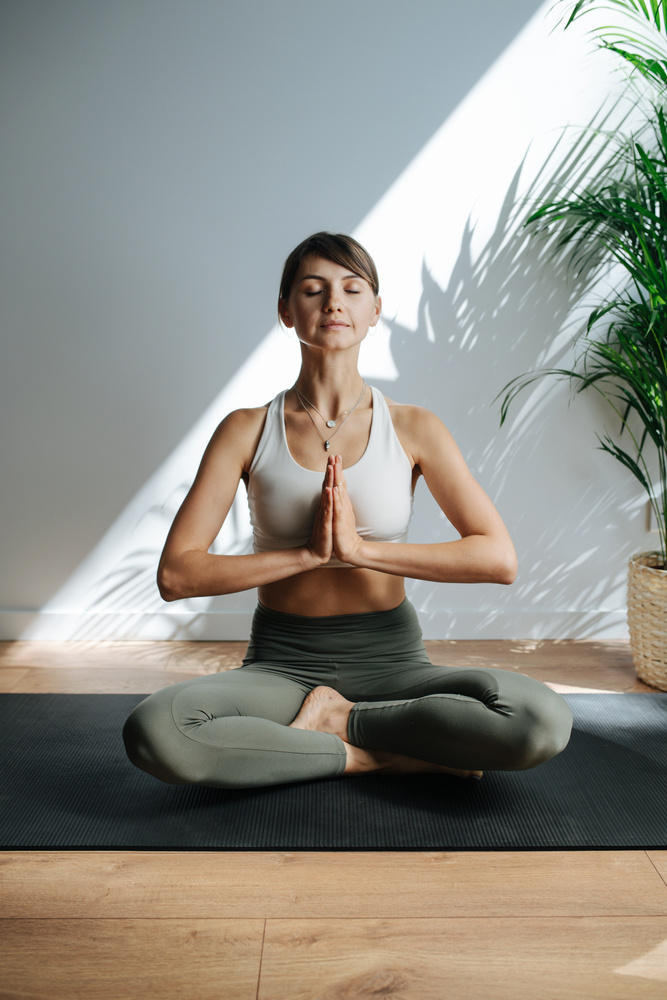
Sukhasana, commonly known as the Easy Pose, is a cornerstone of yoga that emphasizes both physical alignment and meditative tranquility. Simply the name of this pose cultivates a sense of calmness and inner reflection (3). Its elegance lies in its simplicity, allowing practitioners at every level of their yoga journey to embrace its benefits. Here are the overall guidelines for Sukhasana for beginners:
- Look for support: Before diving into the pose, place a supportive padding like a blanket, block, or bolster beneath you. This ensures your hips are elevated, naturally guiding your knees downward.
- Ground yourself: Sitting atop your chosen padding, cross your legs comfortably. Use your hands to adjust the flesh around your glutes, ensuring a grounded foundation on the hip bones.
- Balance the torso: Gently sway your torso in all directions, ensuring your shoulders stack above your hips. Slide your shoulder blades down to distance them from your ears, creating a tall, proud chest.
- Position the hands: Let your hands rest on your thighs or lap. Depending on your mood, turn your palms upwards to receive energy or downwards for grounding.
- Breathe with purpose: Inhale, feeling your spine stretch upwards, and exhale, feeling a deep connection to the ground beneath you.
Step-by-Step Guide on How to Perform Sukhasana
1. Sit on your yoga mat or blanket with your legs outstretched.
2. Keep your arms resting beside you and let the shoulder blades find their natural alignment.
3. Gracefully cross your legs at the shins, placing one over the other.
4. Allow each foot to nestle beneath the opposite knee, creating a relaxed cross-legged position.
5. With calm, place your hands atop your knees, palms facing downward.
6. Press your sit bones firmly, ensuring an erect back. This establishes a strong yet flexible spinal column.
7. With a relaxed neck, look forward, pairing this with deep inhalations and exhalations. Hold this serene stance for a minute or as guided by your instructor.
8. To ensure evenness, change the crossing of your legs and immerse yourself once more in the pose.
While Sukhasana might seem elementary at first glance, its power is profound. For those with tight hips, slight modifications, such as the addition of a cushion or bolster, can offer enhanced comfort. By dedicating time to this pose, one doesn't just strengthen the body but also nurtures the soul, fostering a deep sense of inner peace.
11 Surprising Benefits of Sukhasana Yoga
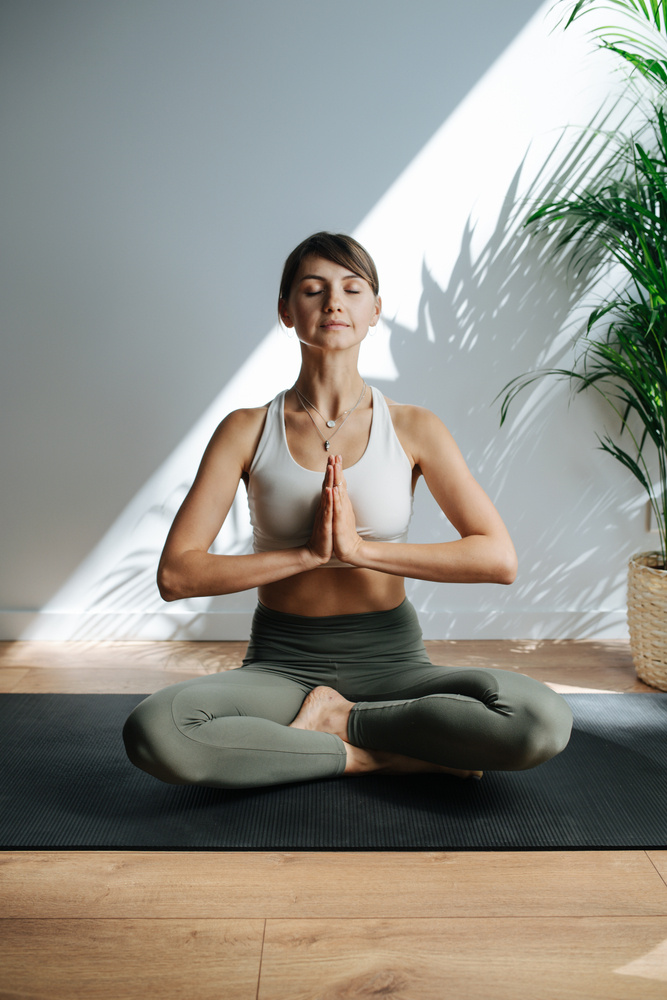
While its name, Easy Pose, might suggest simplicity, Sukhasana is brimming with a range of health benefits for both the mind and body. For those who perform it wholeheartedly, Sukhasana becomes a nurturing sanctuary, offering tranquility, strength, and rejuvenation.
Let’s delve into the easy pose benefits.
1. May Improve Concentration Levels

Sukhasana's meditative nature offers a serene space for the mind, body, and soul to unify (3). This fusion can lead to enhanced focus and reduced stress, providing a mental oasis amidst life's chaos.
2. May Promote Inner Calm
The gentle rhythm of one's breath during Sukhasana can usher in profound calmness (3). Being present in the moment, one can attain a state of tranquility, fostering inner peace.
3. May Alleviate Pain
One of the standout benefits of this pose is its potential to mitigate lower back and knee pain, offering relief to many who suffer from chronic discomfort (4).
4. May Boost Mobility
Sukhasana facilitates the unlocking of knees, hips, and ankles. Practicing it regularly can enhance joint flexibility and overall mobility (4).
5. May Strengthen Core Muscles
Holding this pose works wonders for the abdominals and the muscles supporting the spine (5). This not only strengthens the core but also fosters better posture and alignment.
6. May Aid in Digestion
The posture maintained in Sukhasana ensures enhanced blood flow to the lower abdomen. This can be instrumental in promoting digestive health and reducing gastrointestinal issues.
7. May Stretch Key Muscle Groups
As one sits cross-legged in Sukhasana, it stretches the ankles, knees, and muscles (located in the inner thighs) and releases tension, and maintains flexibility (5).
8. May Boost Postural Awareness
Regularly practicing Sukhasana may improve one's posture, promote spine alignment, and mitigate the risks of slouching.
9. May Regulate Blood Pressure
The calming nature of Sukhasana may also help regulate blood pressure (6). So, it will potentially offer benefits to those with hypertension.
10. May Enhance Happiness
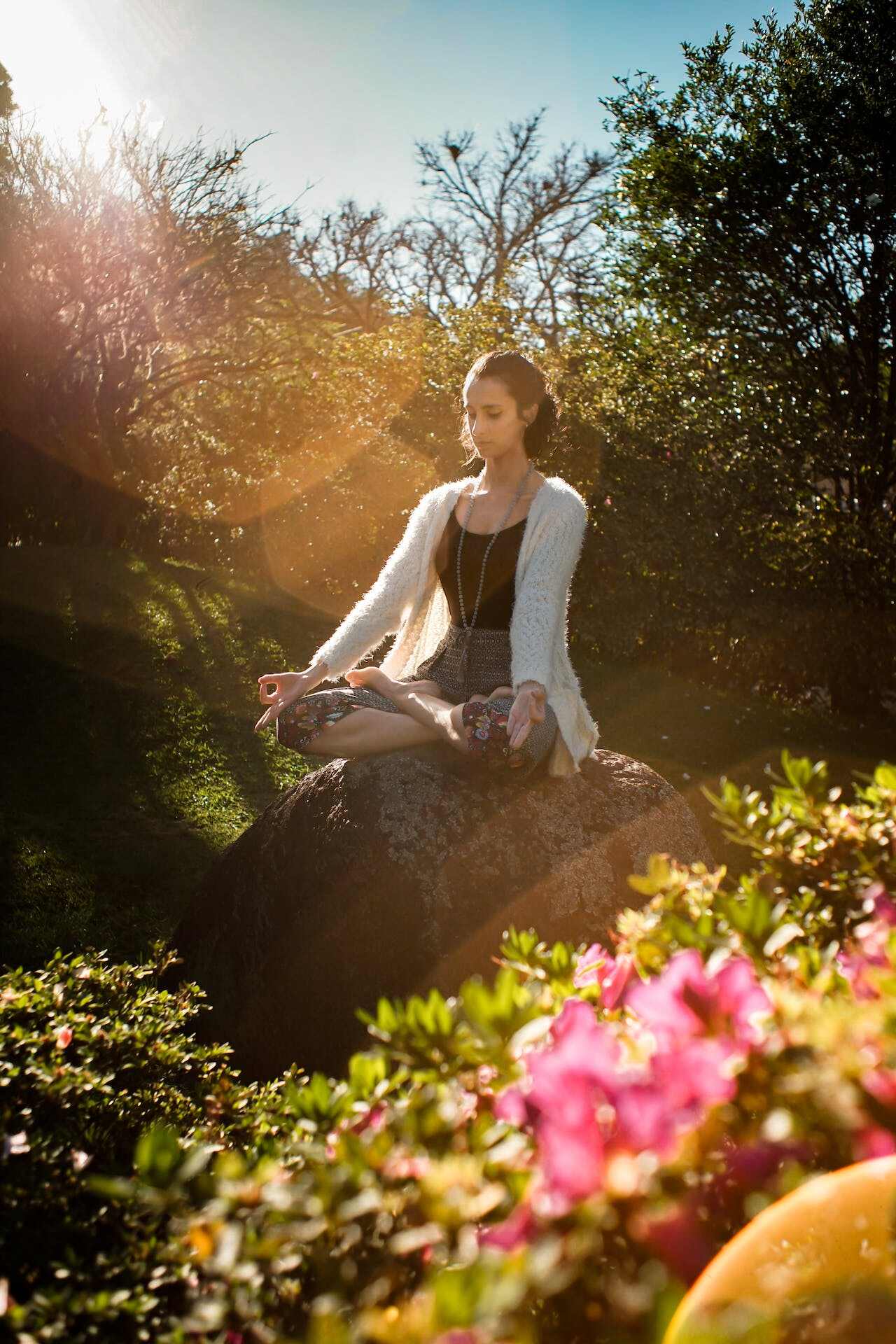
As the practitioner focuses inwardly, there's an increased awareness of one's body and emotions (7). This inward journey can often lead to heightened contentment and happiness.
11. May Aid Weight Management
While it may sound surprising, consistent practice of Sukhasana can lead to improved metabolism, potentially aiding in weight loss (8).
The Sukhasana benefits make it more than just an "easy pose." Even the simplest of postures can open doors to a multitude of health benefits.
Precautions to Take While Performing Sukhasana
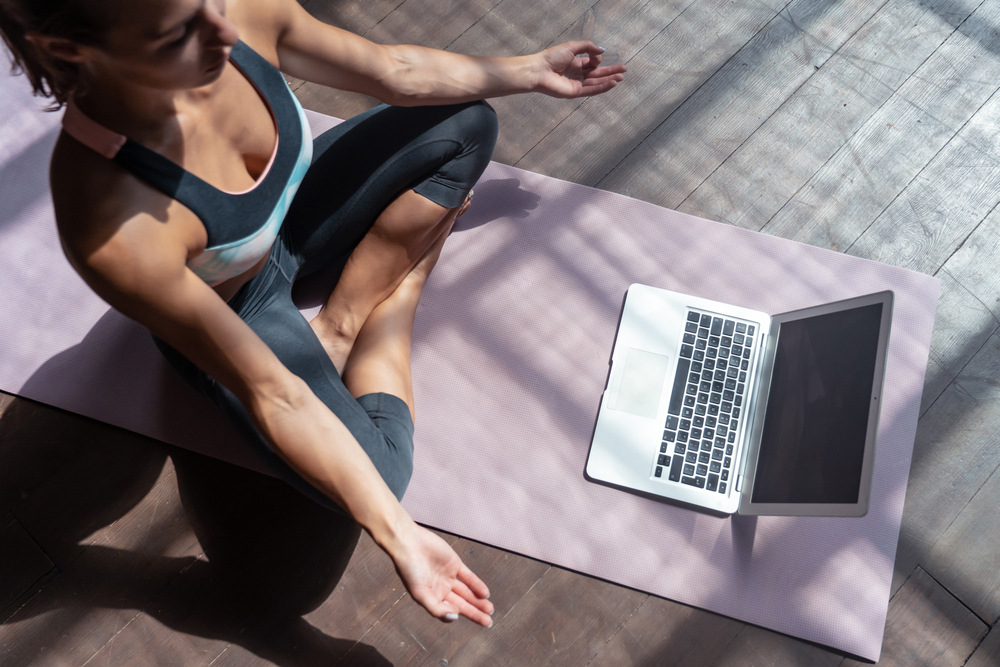
Sukhasana or the Easy Pose might appear simple, but achieving its true essence demands precision, awareness, and, sometimes, modifications. Though largely beneficial, practicing Sukhasana with care is essential, ensuring that each body part is correctly aligned to prevent discomfort and injuries. Let's take precautions to ensure a safe and effective Sukhasana practice.
1. Upper back and neck
Potential challenge: There is a risk of straining the neck or upper back if one slouches or allows the chin to be put forward in an easy yoga pose.
Tips for Adjustment:
- Elevate the breastbone, allowing your shoulders to broaden away from each other without pushing them too far back.
- Tuck your chin towards the front of your neck. Envision the back of your neck being gently elongated upwards.
2. Lumbar spine
Potential challenge: The lower back might curve inwards (resembling a backbend) or outwards (arching the back), which can exert undue pressure on the spine.
Adjustment tips:
- In case your back is curving inwards, visualize your tailbone sinking towards the ground. This minor adjustment can help straighten the lumbar spine.
- For an outward-curving back, gently tilt the pelvic girdle forward. Elevating the hips slightly using a blanket or blocks can facilitate this pelvic tilt.
3. Legs
Potential challenge: There's a possibility of restricting circulation in the legs, especially if one has existing circulation-related conditions or is pregnant.
Adjustment tips:
- Avoid pulling your feet too close to your pelvis. Keeping them at a moderate distance prevents excessive knee bending. Sitting on padding can offer additional relief.
- Limit the time spent in this position. Opt for the Staff Pose (Dandasana) as an alternative.
4. Hips
Potential Challenge: Less flexible hips might prevent the knees from being close to the ground, potentially straining the spine.
Adjustment tips:
- Use yoga blocks or a blanket under your buttocks for elevation.
- Placing padding under the knees can enhance stability and grounding in the pose.
5. Feet and Ankles
Potential challenge: Elevated knees might lead to excessive sideways flexion in the ankles, causing discomfort. The ankles might also feel strained when touching the ground.
Adjustment tips:
- Use soft padding beneath the ankles or double up on yoga mats.
- Tuck each foot under the opposite shin or adjust the heels to line up, opening up the legs slightly.
Among so many difficult poses to learn when you step into the world of yoga, the profound simplicity of poses like Sukhasana makes it more preferred. Achieving the perfect Sukhasana is akin to understanding the rhythm and harmony of human bodies. The delicate balance of the spine's curves is crucial, acting as the very foundation upon which you can ground yourself. Misalignment may disrupt your posture and drain your energy, turning a moment of tranquility into an arduous task. So, as you settle into your next Sukhasana, may you find the right alignment, comfort, and serenity, adding a true sense of peace to your practice.
Contributor: Bayu Prihandito, Certified Psychology Consultant, Life Coach, and RYT 200 Yoga Teacher, Founder - Lifearchitekture





 JOIN OUR WHATSAPP CHANNEL
JOIN OUR WHATSAPP CHANNEL































































































